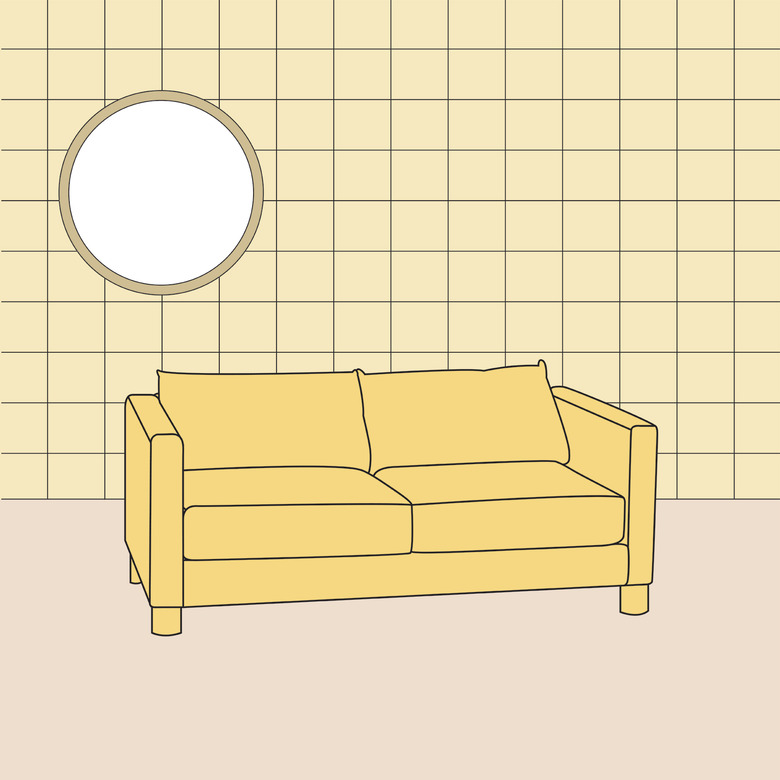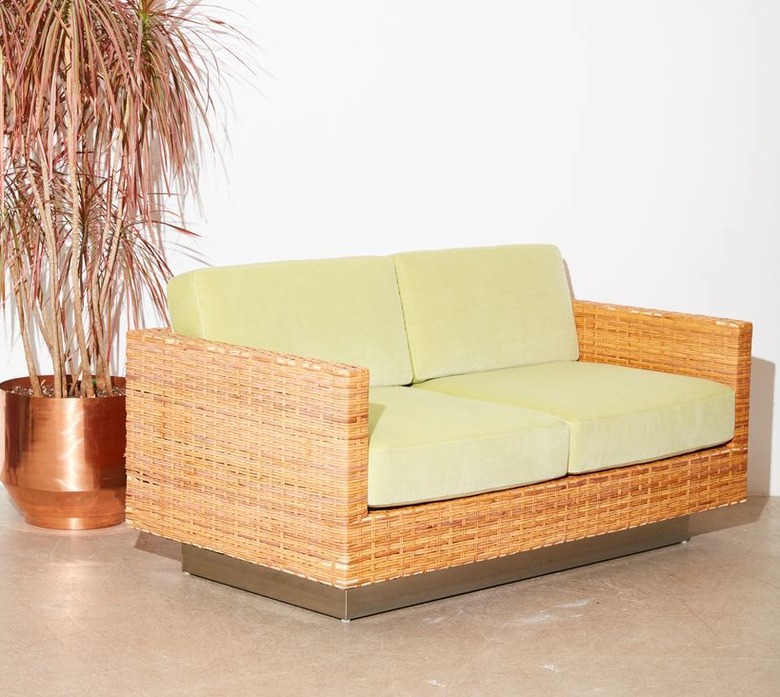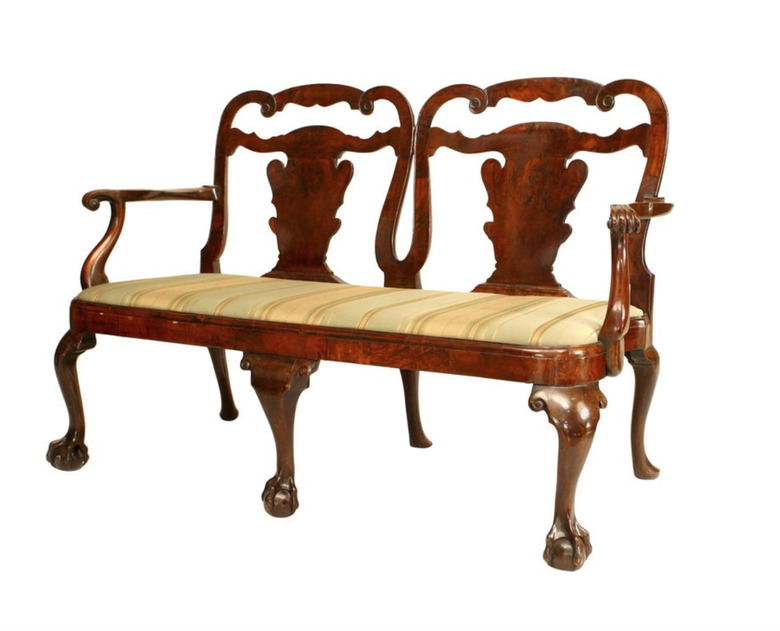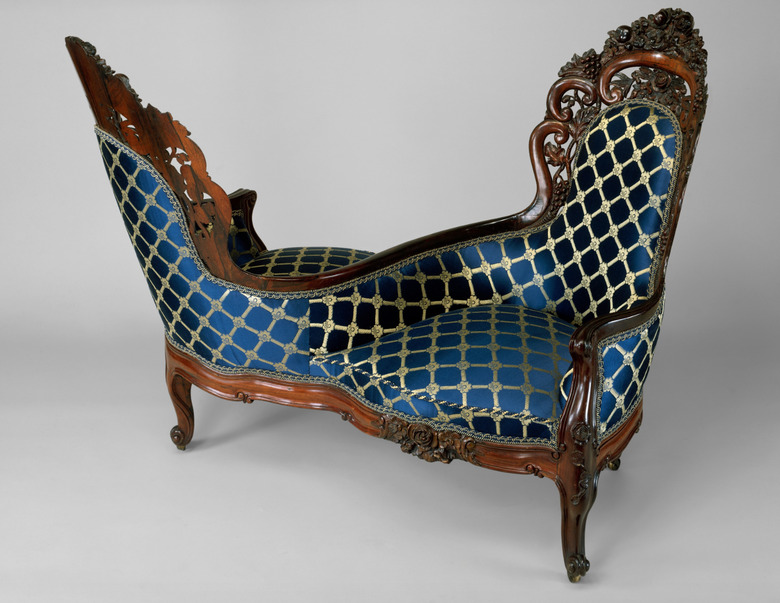The Loveseat Was Originally Built For One
Imagine: It's 1755 and you're a young woman about to make your debut on the London social scene. You're going on carriage rides, hunting parties, and, of course, grand balls, and you need a wardrobe befitting your station. Women's fashions are getting more extravagant each year — hair gets taller, skirts get wider. On a night out you're looking at wearing at least five layers: the chemise, the crinolines, and the hoop skirt — and that's before you even put your dress on! Finally ready, you make your way into the party, swathed in more yards of fabric than you've ever even seen before, and that's when you ask the question:
How on earth are you supposed to sit down?
When was the loveseat invented?
And thus the object we know as the loveseat was born: not for romance, but for fashion. Often referred to as a settee, a divan, or a tête-à-tête, early loveseats looked less like mini couches and more like expanded chairs — wooden arms and legs, upholstery over the seat, and a carved wood back. In the mid-1700s, anyone who was anyone in England or America had one made by Thomas Chippendale, the preeminent wooden furniture maker of his day, and while original Chippendale pieces regularly sell for hundreds of thousands of dollars, his name came to define the style itself, meaning less expensive versions were available to the newly minted upper middle class.
It's there, in the upscale parlors of Edith Wharton novels that the loveseat's new purpose began to emerge. While the formal gowns of the 19th century might still seem heavy to us now, they grew smaller and smaller as the years passed, and eventually the hoop skirt fell out of fashion entirely. Suddenly, seats built to hold one woman and her clothes could comfortably (if a bit cozily) accommodate two.
You can probably guess where this is going.
Where did the name loveseat come from?
The loveseat was suddenly the perfect answer to the question of how to negotiate romantic feelings in full view of polite society. In a tête-à-tête or, as they were sometimes known, "courting chair," an unmarried couple might sit and chat tantalizingly near one another — not so close as to arouse suspicion or scorn, but close enough to speak in flirtatious whispers or surreptitiously brush hands. One popular offshoot of the style (thought to originate in France) was actually carved in an S-shape; so two people might sit next to each other but not next to each other — a thrilling distance for ardor. This new charged interpretation of the seat's purpose made it, in the 20th century, a popular addition to bedrooms and dressing rooms. Even if you weren't, in the 1940s, actually going to entertain a lover in your boudoir, the addition of a loveseat made it seem like you might, transforming the space from a utilitarian one into something more ... exciting.
By the 1970s, the loveseat was something that came standard with many living room sets — a larger couch, an easy chair, and a two-seater that could hold kids during the day and guests in the evening.
Today, as furniture designs increasingly have to account for apartment living, loveseats often serve as a room's primary seating — a sofa in miniature. Still, having one might be a fun excuse to sit extra close to the object of your affection ... or just to put on your most elaborate party clothes and luxuriate all by yourself.



